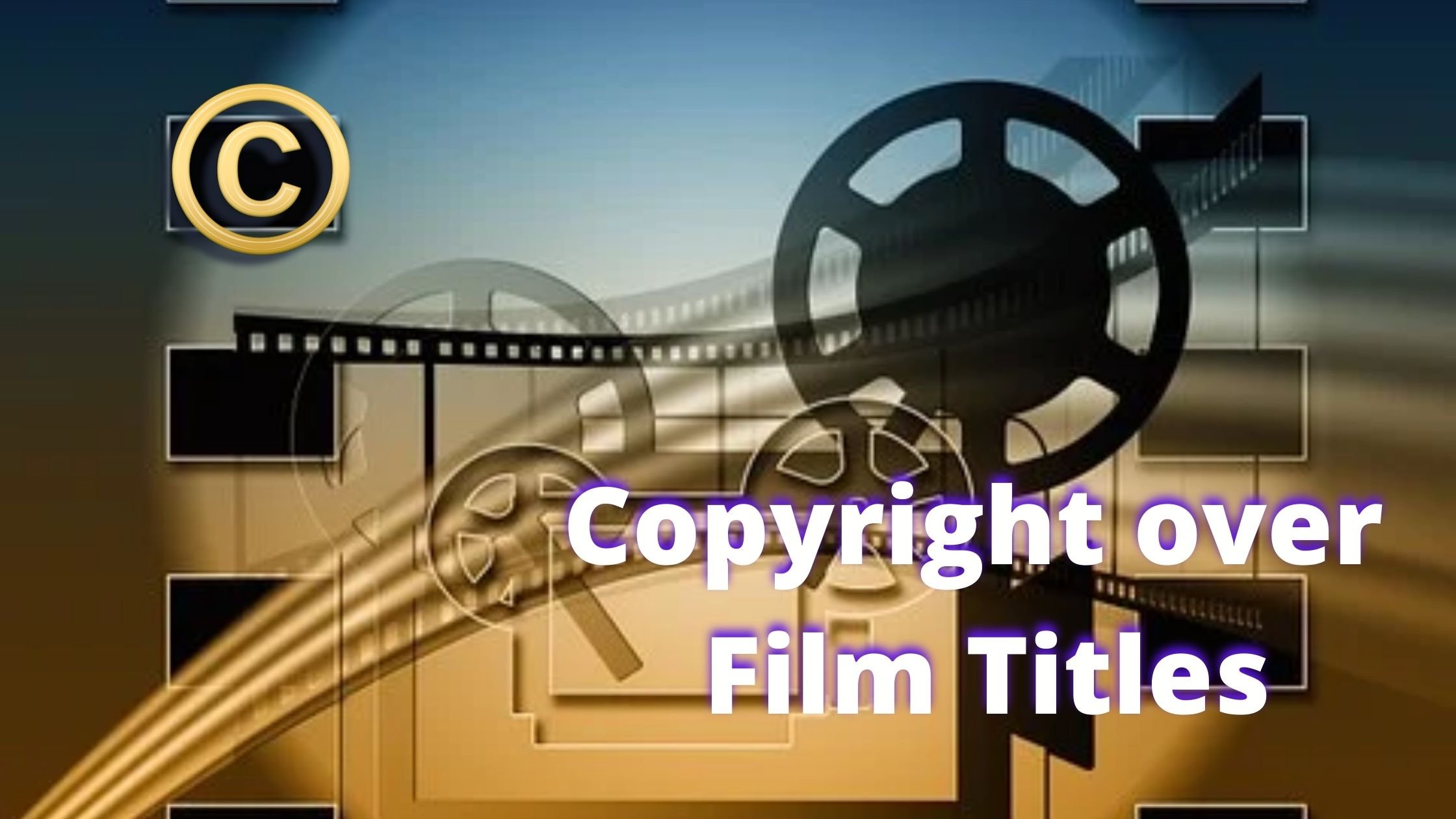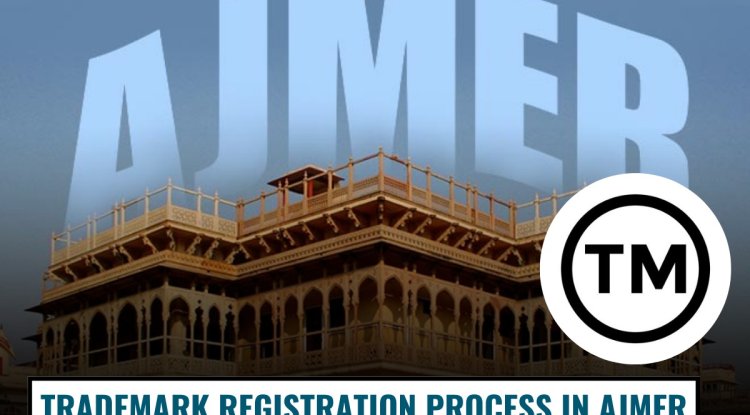Copyright over Film Titles
A ‘film's title’ is a very important part of the cinematographic work's identity. This is what is used to identify and separate films from one another. This makes it a very important part of the film and therefore needs security. They are not, however, unreservedly protected under either the Copyright Act or the Trademark Act.

A ‘film's title’ is a very important part of the cinematographic work's identity. This is what is used to identify and separate films from one another. This makes it a very important part of the film and therefore needs security. They are not, however, unreservedly protected under either the Copyright Act or the Trademark Act.
Trademark infringement is frequent in today's world. A trademark that is deceptively identical to a trademark of the other is adopted by individuals at all stages. Various IP problems have arisen with the growth of trade and commerce and the passing of time. The title of literary, dramatic, and cinematographic works is one of these concerns. There is a lot of uncertainty in the minds of people in the field of law about the legislation regulating the title, whether or not its unauthorized adoption amounts to an infringement, etc. because this problem is new to India. The unauthorized use or approval of a film or a book's title is as much a trademark violation as it is in other cases.
Rights of film title under Indian Trademark Act
Under the Trademark Act, 1999, film titles are given registration and protection. Under Class 41, of the fourth schedule of the Trademark Law, 2001, filmmakers in India may register their film title as a service mark. Class 41 allows for trademark registration in the form of different services, including entertainment. In the legal action, the registration of a trademark constitutes prima facie validity of the mark. It should be noted; however, that registration under the Trademark Act is only available under two significant conditions:
-
It is possible to split the film titles into two categories: a) the title of the film series, b) the title of the single film series. When opposed to the title of a single film, the title of a series of films will easily gain trademark registration and protection. The Dhoom franchise, i.e. Dhoom, Dhoom II, and Dhoom III, are examples of the title of the series of films. However, registration under the Trademark Act would not be granted when it comes to the title of a single film. In order to gain trademark recognition, the title of a single film must pass a second qualifier.
-
Secondary meaning title of a single literary work: In this, the title must have gained secondary meaning to be entitled to protection. The secondary significance means that the title is associated with a moviegoer with a certain source, production house, etc. Even pre-release advertising of a title may give rise to the recognition of a title which is sufficient for protection under the proviso clause referred to in clause (1) of section 9 of the Trademark Act 1999, which specifically grants registration of a trademark to a well-known mark or to a mark which has acquired a distinctive character as a result of its use.
The court may take into account the factors listed below when deciding on a secondary meaning:
-
period and consistency of use;
-
Advertising & promotion reach and the amount of money spent;
-
Sales statistics on ticket transactions and the number of individuals who purchased or watched the work of the owner; and
-
The closeness of the Plaintiff and Defendant's regional and commodity markets.
Reasons for title rights under copyright law
-
Under section 13 of the Copyright Act, 1957, original literary, dramatic, musical, and creative works, cinematographic films, and sound recordings are included in the works covered by copyright law. In addition, under section 44, the details entered on the copyright register include the title of the work, the work itself, and the names and addresses of the authors, publishers, and copyright owners. A significant number of individuals are frustrated that along with the work, the copyright applies to the title.
-
The questions before the courts in India so far related to the significant copying of a work. But a case in which the problem is not the copy of a novel, but rather the common title, is a completely new question.
Examples of such cases
-
Kabhi Alvida Naa Kehna - Biswaroop Roy Choudhary v. Karan Johar: Where the plaintiff filed a complaint to prohibit the defendant from using the trademark/title Kabhi Alvida Naa Kehna prior to the release of the Defendants film. The plaintiff alleged that, on 17 May 2005, he had applied for the registration of the said trademark in Class 41. On June 20, 2005, which occurred in the journal on February 15, 2006, the registrar ordered its release. On September 23, 2005, the Mahoorat of Plaintiff's film took place.
-
Kanungo Media (P) Ltd. vs Rgv Film Factory And Ors. Where the defendant's Nishabd 'film was all set to be released, the appellant filed a permanent injunction alleging damages. Plaintiff argued that the title 'Nisshabd' had been first adopted and his film had received numerous prestigious awards. On June 8, 2005, the plaintiff applied for CBFC clearance and on June 17, 2005, clearance was issued. While due to lack of funding, the film was not commercially screened, it had received several awards worldwide and thus had gained distinction. The fact that a film festival organized by Zee cinema in collaboration with M/s Adlabs (hereinafter defendant no 2) where the film of the plaintiffs was screened and a brochure was made available that included full details of the awards received by the film of the plaintiffs, makes it quite clear that the defendants were aware of the film of the plaintiffs although it was not commercially released.
Know more about how movies like "Partner", "Dhammal", "Jannat2" etc. were copied ??, see the video below -
v
Conclusion
It is very obvious that in this particular area, there are very few cases in India. This is attributed to numerous factors. In such cases, most of the time, the disputes are resolved outside the court i.e. by agreement. The matter is determined, whenever it has entered the Court, on the basis of the principles developed long ago. On the classifications, there are no clarifications or instructions. The main goal of this paper was to reflect on the shortcomings of the criteria used to determine the issues relating to film titles. In conclusion, the paper defined how the solution is to include a straight cut classification of films, covering all the film varieties underneath. Therefore to clarify, the need for the hour is for the courts to include those classifications to the production houses that are ideally suited according to the form of media work being produced in the film industry.
To know more about, Protection of Movie Titles under Copyright, see the video below -
Video
BY-
Ankita Rathi












